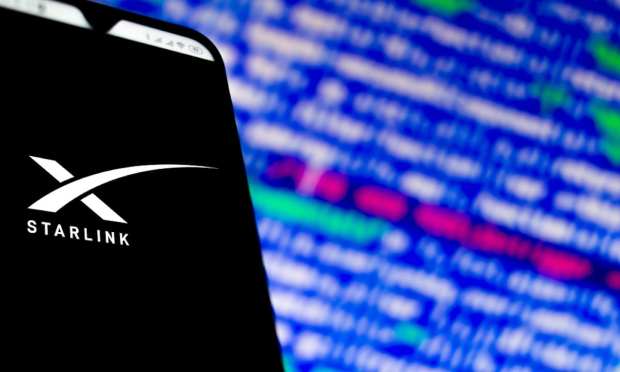Elon Musk And Starlink Signal The Connected Economy From Space

Scenarios of handling financial transactions while sitting at a campsite in the woods might make for great commercials. But the reality is that in order for the connected economy to truly provide such service, internet access will need to be dramatically boosted – especially in rural areas and in exceptional locales, such as at sea or in mid-air.
That’s the goal of SpaceX’s Starlink network of low-Earth-orbit satellites that have been whizzing around our planet since May 2019. To push the technology forward, in a tweet on Monday (March 8), SpaceX CEO Elon Musk revealed that his company is now working on antennas that can be installed on planes, ships, large trucks and RVs to pull down Starlink’s internet service, no matter where on Earth they are.
Musk’s announcement is a clarification of a CNBC article that reported on a SpaceX filing with the FCC stating that the company planned to connect its satellite system to “moving vessels.” That report hinted that SpaceX was aiming to add antennas to everything from “trucks to jets to ships.” While it might seem like a given that Musk would want to bring the Starlink connectivity to his fleet of Tesla autos, he said that the user “terminal is much too big,” meaning that so many connected vehicles would put a drain on the still-expanding network. Instead, introducing the tech to less-widely-used vessels – like RVs, ships and planes – allows the company to expand its service in concert with its capabilities.
Since the launch of the first 60 satellites in the Starlink network on May 23, 2019, SpaceX has blasted more than a thousand of the devices into low-Earth orbit. Taken together, the satellites are known in space lingo as a “mega-constellation.” As opposed to other space-based internet satellites that orbit higher than 22,000 miles above the Earth, the Starlink satellites circle at a distance of just 340 miles (550 km). This means that latency – the time it takes for signals to travel between Earth-based devices and the satellites – is much lower, at least theoretically.
Reviews of the platform’s speed have been mixed so far. One of the major issues is that the Starlink satellites are not in geosynchronous orbit – meaning they don’t stay put over one spot on the Earth as both revolve. So, until more satellites are deployed, the ground-based antenna moves to pick up the next satellite in range, and this can cause temporary outages. Not a big deal if you’re just reading PYMNTS, but not great if you’re on a Zoom call or you just pushed “send” on a major financial transaction.
As more satellites are launched, though, that issue should begin to fade. SpaceX currently launches 60 satellites at a time, each weighing 500 pounds, on Falcon 9 reusable rockets. The company’s initial filing with the FCC was for 12,000 satellites to join the constellation, so the project is still very much in its early stages. According to Space.com, SpaceX additionally filed paperwork with the International Telecommunication Union to launch as many as 30,000 satellites.
With that many satellites zipping above our heads, banking in the boondocks should be a breeze. But will there still be enough clear sky to see the stars?
